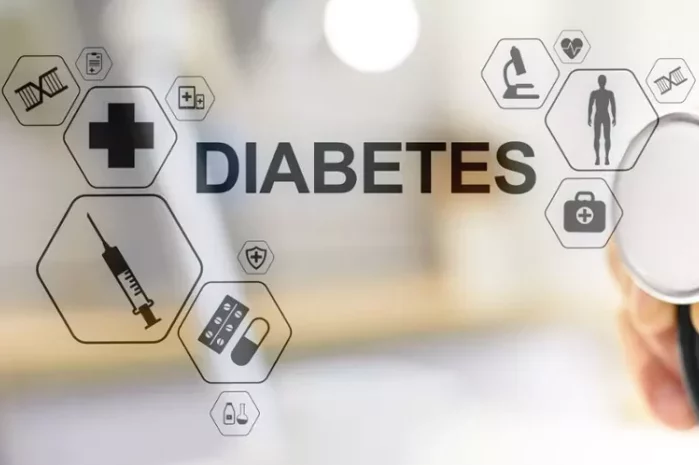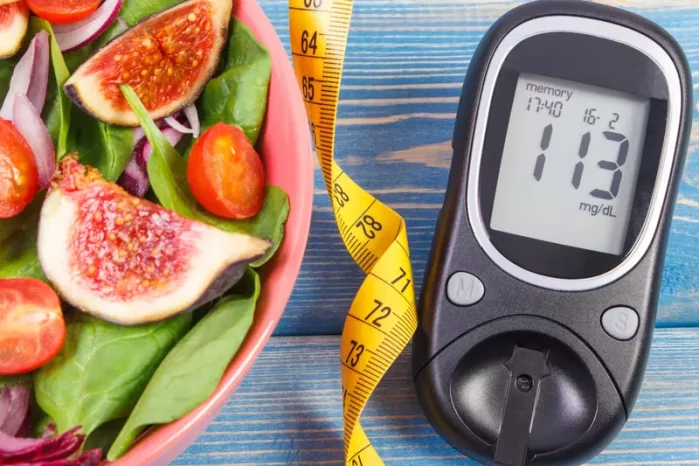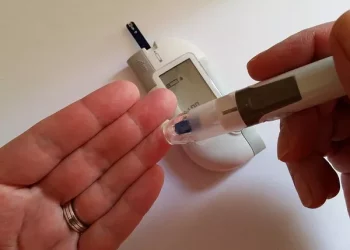Low blood sugar, also known as hypoglycemia, occurs when the level of glucose in your blood drops below normal, which can cause symptoms such as dizziness, confusion, weakness, and irritability. This condition is particularly common among individuals with diabetes who take insulin or other blood sugar-lowering medications. While hypoglycemia can be alarming, it can be managed effectively with appropriate dietary choices.
In this article, we will discuss the essential foods to include in your diet when you experience low blood sugar, how to balance your meals, and tips for managing hypoglycemia in a practical, sustainable way.
Understanding Low Blood Sugar (Hypoglycemia)
Before delving into the dietary recommendations, it is crucial to understand what happens when your blood sugar falls too low. Blood sugar, or glucose, is the primary energy source for your body. The liver stores glucose, releasing it into the bloodstream as needed. When glucose levels drop too low, your body sends signals to alert you to the imbalance. If not addressed, low blood sugar can lead to severe complications, such as loss of consciousness or seizures.
Hypoglycemia can be caused by several factors, such as skipping meals, excessive physical activity, too much insulin, or medication side effects. Recognizing the early signs of low blood sugar, including sweating, shakiness, confusion, and hunger, is crucial for prompt action.
Foods That Can Help Raise Low Blood Sugar Quickly
When your blood sugar drops to dangerously low levels, it is essential to raise it quickly. The American Diabetes Association recommends the “15-15 Rule” as a guideline for treating hypoglycemia. This involves consuming 15 grams of fast-acting carbohydrates and checking your blood sugar after 15 minutes. If your blood sugar remains low, repeat the process.
Here are some foods that can provide a quick boost in blood sugar:
Glucose Tablets: These are specifically designed to raise blood sugar quickly and come in a pre-measured dosage.
Fruit Juices: A small glass (about 4 ounces) of orange juice or apple juice can provide a rapid increase in blood sugar.
Regular Soda: Choose soda without caffeine, as it is high in sugar and can quickly raise your glucose levels.
Hard Candies or Jelly Beans: Simple candies, such as Lifesavers or jelly beans, are effective in raising blood sugar levels.
Honey or Syrup: A tablespoon of honey or syrup can also serve as a fast-acting sugar source.
While these quick fixes are useful for immediate relief from hypoglycemia, they should be followed by a balanced meal to maintain stable blood sugar levels.
Long-Term Strategies for Managing Blood Sugar Through Diet
Managing low blood sugar in the long term requires a well-balanced diet that ensures a steady release of glucose into the bloodstream. Consistent, balanced meals can prevent sharp drops in blood sugar that lead to hypoglycemia. Here are some dietary strategies to help manage low blood sugar:
1. Prioritize Complex Carbohydrates
Carbohydrates are the body’s primary source of glucose. However, not all carbohydrates are created equal. Foods rich in complex carbohydrates, such as whole grains, legumes, and vegetables, provide a slower and more sustained release of glucose into the bloodstream compared to simple carbohydrates, which cause spikes and subsequent crashes in blood sugar levels.
Examples of complex carbohydrates:
Whole grains: oats, quinoa, brown rice, barley
Legumes: lentils, chickpeas, beans
Vegetables: leafy greens, broccoli, sweet potatoes, carrots
Fruits: apples, pears, berries (in moderation)
Incorporating these complex carbohydrates into your meals helps maintain stable blood sugar levels and reduces the risk of hypoglycemia.
2. Include Lean Proteins
Protein plays a key role in maintaining steady blood sugar levels. It helps slow the absorption of carbohydrates, ensuring that your body doesn’t experience drastic spikes or drops in glucose. Including lean protein sources in your meals can help regulate blood sugar throughout the day.
Examples of lean proteins:
-
Chicken or turkey breast
-
Fish, such as salmon, trout, and sardines
-
Eggs
-
Tofu or tempeh
-
Low-fat dairy products, such as Greek yogurt or cottage cheese
Protein is especially important in meals and snacks, as it helps curb hunger and provides a steady source of energy.
3. Healthy Fats are Essential
In addition to protein and complex carbohydrates, healthy fats play a crucial role in stabilizing blood sugar levels. Fats slow down the digestion process, which can prevent blood sugar spikes. Omega-3 fatty acids, in particular, have been shown to support overall metabolic health.
Examples of healthy fats:
-
Avocados
-
Nuts and seeds (almonds, walnuts, chia seeds, flaxseeds)
-
Olive oil or coconut oil
-
Fatty fish (salmon, mackerel, sardines)
Including these healthy fats in your diet can help promote long-term blood sugar control, preventing both hypoglycemia and hyperglycemia.
4. Eat Smaller, More Frequent Meals
For individuals prone to low blood sugar, eating smaller, more frequent meals throughout the day can help keep blood sugar levels stable. Instead of eating three large meals, consider eating 5-6 smaller meals that include a combination of complex carbohydrates, lean proteins, and healthy fats. This approach can prevent blood sugar dips and help maintain energy levels.
5. Fiber-Rich Foods Are Key
Dietary fiber slows the absorption of sugar and helps regulate blood sugar levels. Soluble fiber, found in foods like oats, beans, and fruits, is particularly effective at lowering blood sugar. Fiber also promotes feelings of fullness, which can prevent overeating and help with weight management.
Examples of fiber-rich foods:
Whole grains: oats, barley, whole wheat bread
Fruits: apples, berries, oranges
Vegetables: leafy greens, broccoli, carrots
Legumes: lentils, chickpeas, beans
Including fiber-rich foods in your diet can help maintain consistent energy levels and reduce the risk of both hypoglycemia and hyperglycemia.
6. Avoid Processed Sugars and Refined Carbs
While it might be tempting to reach for sugary snacks or drinks to raise blood sugar in the short term, these refined sugars can lead to rapid spikes followed by crashes in blood sugar. For long-term management of hypoglycemia, it is best to avoid processed sugars and refined carbohydrates that can cause blood sugar fluctuations.
Examples to avoid:
-
Candy bars
-
Baked goods made with refined white flour
-
Sugary sodas and drinks
-
White bread and pasta
Instead, focus on whole, unprocessed foods that provide a steady source of energy without causing drastic blood sugar changes.
The Role of Hydration in Blood Sugar Regulation
Hydration plays a critical role in blood sugar regulation. Dehydration can cause blood sugar levels to rise, making it more difficult for your body to manage glucose. Drinking plenty of water throughout the day helps support kidney function, which is essential for processing glucose and insulin.
In addition to water, herbal teas, such as cinnamon or ginger tea, can offer additional benefits for blood sugar regulation. Be mindful of sugary drinks, such as sweetened coffees or sodas, which can lead to fluctuations in blood sugar.
Sample Meal Plan for Managing Low Blood Sugar
Here’s a sample meal plan to help manage low blood sugar while ensuring balanced nutrition:
Breakfast:
Scrambled eggs with spinach and a slice of whole-grain toast
A small apple or a handful of berries
A cup of green tea
Snack:
Greek yogurt with chia seeds and a few walnuts
Lunch:
Grilled chicken breast with quinoa and steamed broccoli
A mixed salad with olive oil dressing
Snack:
Carrot sticks with hummus
Dinner:
Salmon fillet with roasted sweet potatoes and asparagus
A small side of sautéed kale
Evening Snack:
A small handful of almonds or pumpkin seeds
This meal plan focuses on nutrient-dense foods that promote steady blood sugar levels and overall health.
Important Tips for Managing Low Blood Sugar
Monitor Your Blood Sugar Levels: Regular monitoring of your blood sugar can help you identify patterns and prevent hypoglycemia before it becomes a serious issue.
Know Your Symptoms: Be aware of the signs of low blood sugar so you can take action quickly. Early symptoms include shakiness, sweating, confusion, and irritability.
Talk to Your Doctor: If you experience frequent low blood sugar episodes, it’s important to work with your healthcare provider to adjust your diet, medications, or insulin regimen.
Exercise Smartly: Physical activity can lower blood sugar levels, so be sure to have a snack before and after exercise to prevent hypoglycemia.
Conclusion
Managing low blood sugar is not only about quick fixes when you feel your blood sugar drop but also about maintaining a balanced, nutritious diet that supports stable glucose levels. By incorporating complex carbohydrates, lean proteins, healthy fats, fiber-rich foods, and staying hydrated, you can reduce the frequency and severity of hypoglycemic episodes.
Remember, everyone’s body responds differently to food, and it’s essential to monitor your blood sugar regularly and consult with your healthcare provider for personalized advice. With the right approach to nutrition and a little planning, you can keep your blood sugar stable and lead a healthy, active life.
Related topics:
How Often Should a Hypoglycemic Person Eat?























